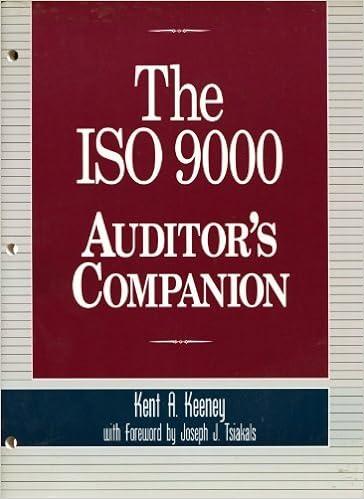Answered step by step
Verified Expert Solution
Question
1 Approved Answer
Develop a slide show providing general information to your colleagues about the component of internal control from the COSO framework you wrote about in your
Develop a slide show providing general information to your colleagues about the component of internal control from the COSO framework you wrote about in your final project report. Identify the component you selected and how you related that component to an effective system of controls.
Your colleagues will be interested in why you have chosen the component.
Indicate why you think this component is of value to an overall system.
Are there any specific concerns you have for individuals in applying this component?
The slide show is not necessarily limited in length, but an appropriate slide show would probably include no less than four slides and is not likely to have more than ten.
The Control Environment is an important aspect of any organization, as it sets the standards for internal control and ethical behavior. This would include the management's integrity, ethical values, and commitment to compliance with laws and regulations. A strong Control Environment helps foster a culture of integrity, accountability, and adherence to ethical standards throughout the organization. When employees perceive a commitment to ethical behavior from top management, they are more likely to resist any temptation to engage in fraudulent activities.
Implications for Fraud Prevention:
The Control Environment is crucial in preventing fraud by creating a culture of honesty, integrity, and accountability within an organization. When management shows a clear commitment to ethical behavior and compliance with laws and regulations, employees are more likely to follow suit and avoid engaging in fraudulent activities such as theft.
For instance, in a case study where employees were involved in embezzlement, a strong Control Environment could have discouraged fraudulent behavior by clearly communicating zerotolerance policies for fraud, promoting transparency in financial reporting, regularly providing ethics training, and setting up channels for reporting suspicious activities without fear of retaliation.
Building a Better Organizational Culture:
A strong Control Environment is essential for creating a positive organizational culture that fosters trust, transparency, and accountability. When employees feel empowered to act with integrity and take ownership of their responsibilities, knowing that management prioritizes ethical conduct and compliance with policies and procedures, it creates a sense of loyalty and commitment among them.
Open communication channels, sufficient resources, and training, and recognition and rewards for ethical behavior are some of how the Control Environment promotes a culture of integrity. This, in turn, enhances employee morale, productivity, and job satisfaction, which ultimately contributes to the longterm success and sustainability of the organization.
Interaction with Other Components:
According to the Committee of Sponsoring Organizations, COSO the components of internal control are Control Environment, Risk Assessment, Control Activities, Information and Communication, and Monitoring Activities, which interact synergistically to set the tone for ethical behavior and integrity.
Risk Assessment: A strong Control Environment assists with effective risk assessment by encouraging proactive identification and evaluation of risks and ensuring that appropriate controls are implemented to mitigate those risks.
Control Activities: The Control Environment forms the basis for designing and implementing control activities, including segregation of duties, authorization and approval procedures, and physical safeguards, to prevent and detect fraud and errors.
Information and Communication: Establishing open and transparent communication channels within the Control Environment facilitates the spread of information related to fraud risks, control procedures, and ethical standards throughout the organization.
Monitoring Activities: The Control Environment ensures continuous evaluation of internal controls to mitigate risks and deter fraud.
To put it simply, the Control Environment is the foundation of strong internal control systems. It establishes ethical standards for behavior, encourages accountability, and cultivates a culture of honesty and compliance within the organization. Working in conjunction with other internal control components helps prevent fraudulent activity and strengthens the organization's ability to withstand challenges and maintain viability over time.
Step by Step Solution
There are 3 Steps involved in it
Step: 1

Get Instant Access to Expert-Tailored Solutions
See step-by-step solutions with expert insights and AI powered tools for academic success
Step: 2

Step: 3

Ace Your Homework with AI
Get the answers you need in no time with our AI-driven, step-by-step assistance
Get Started


